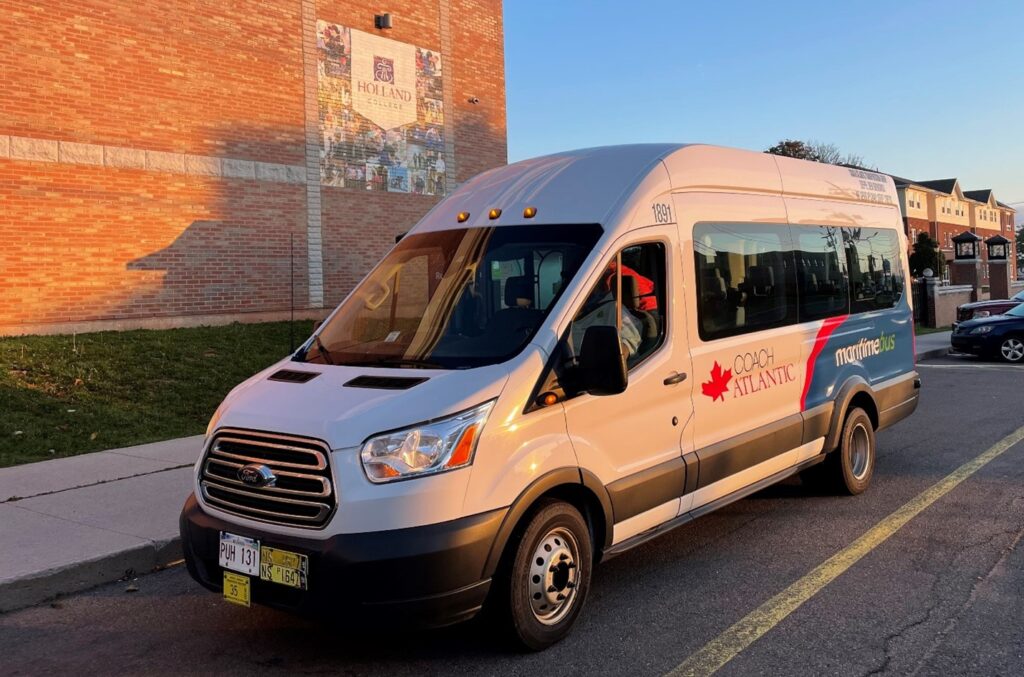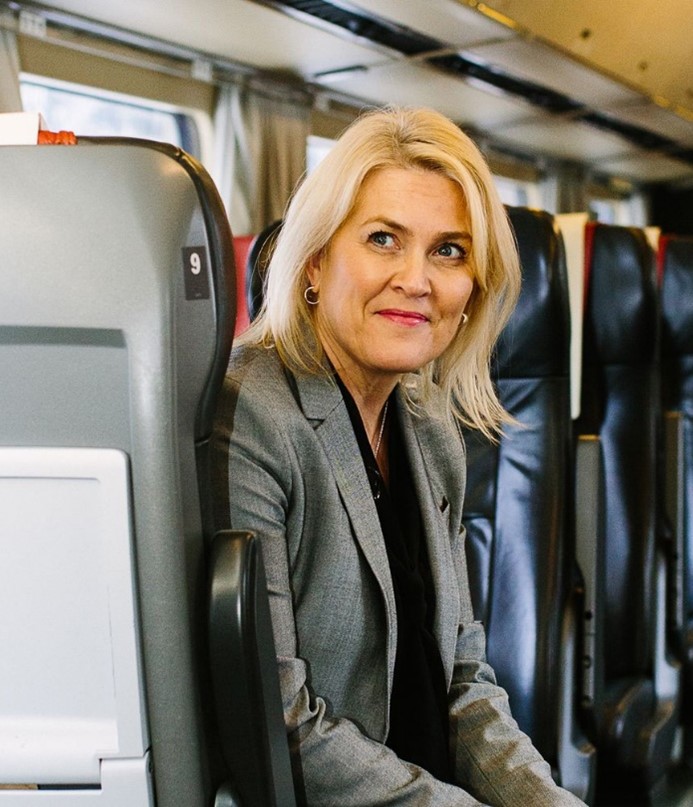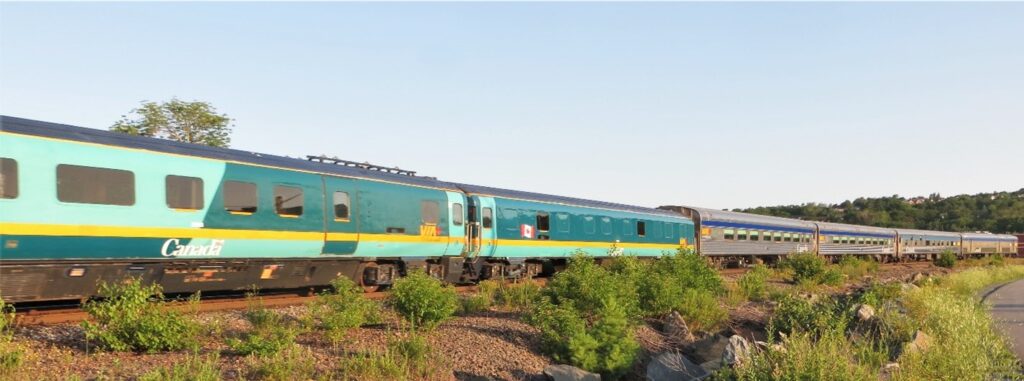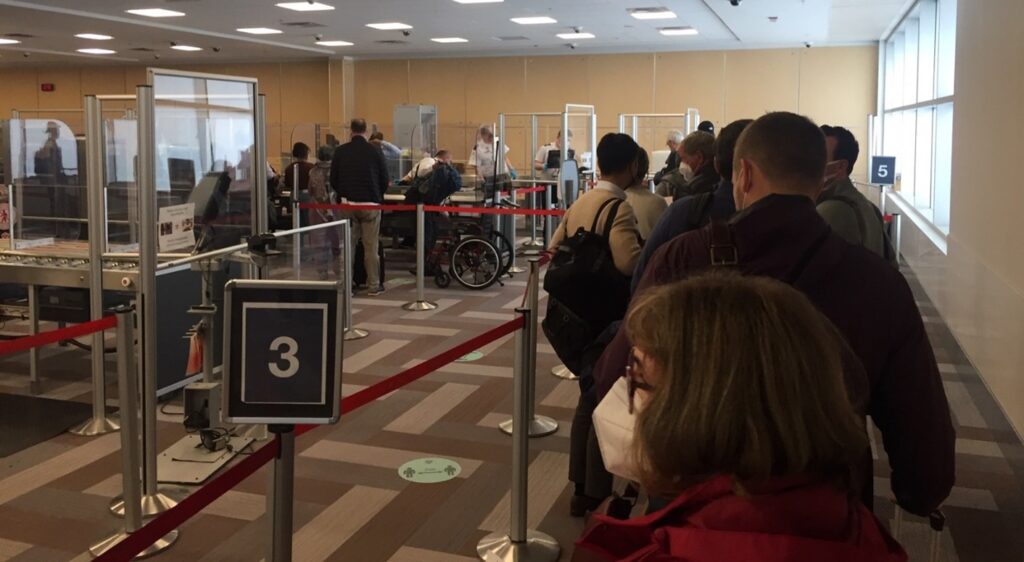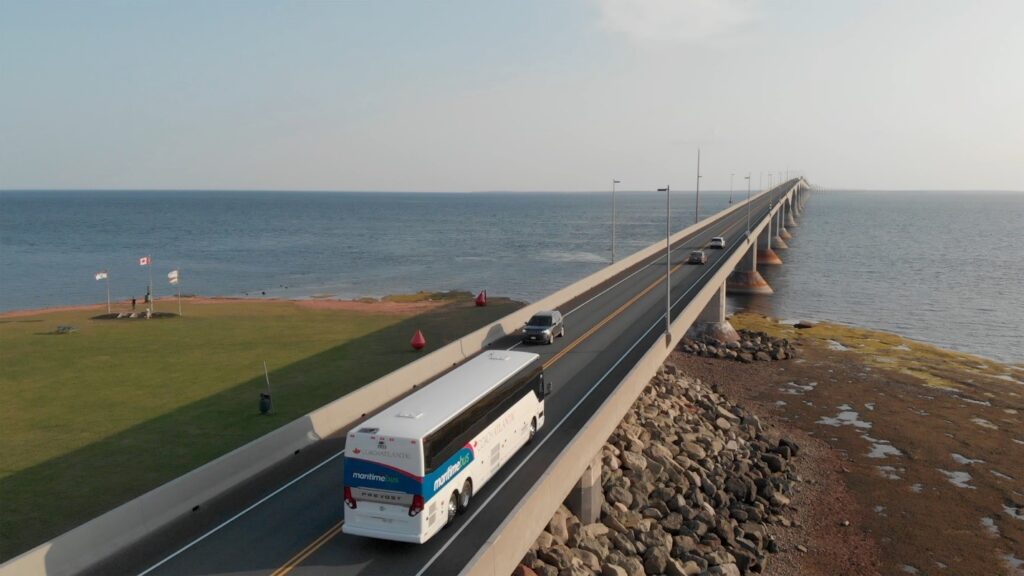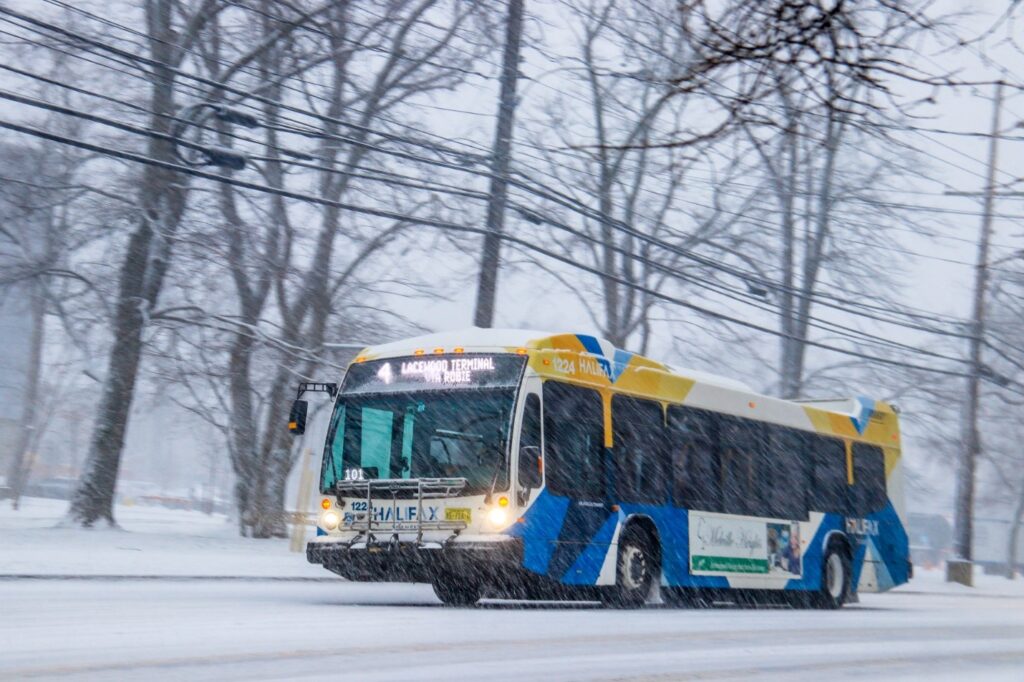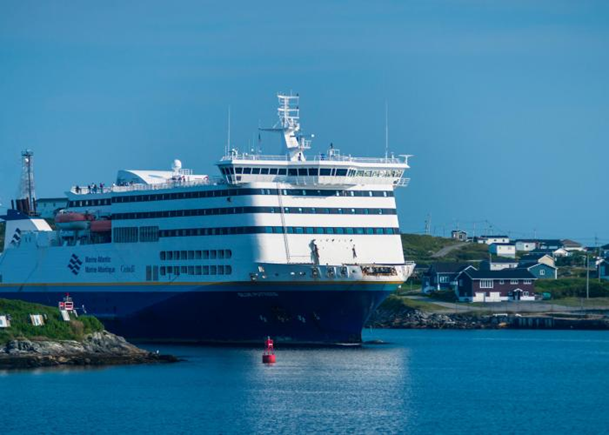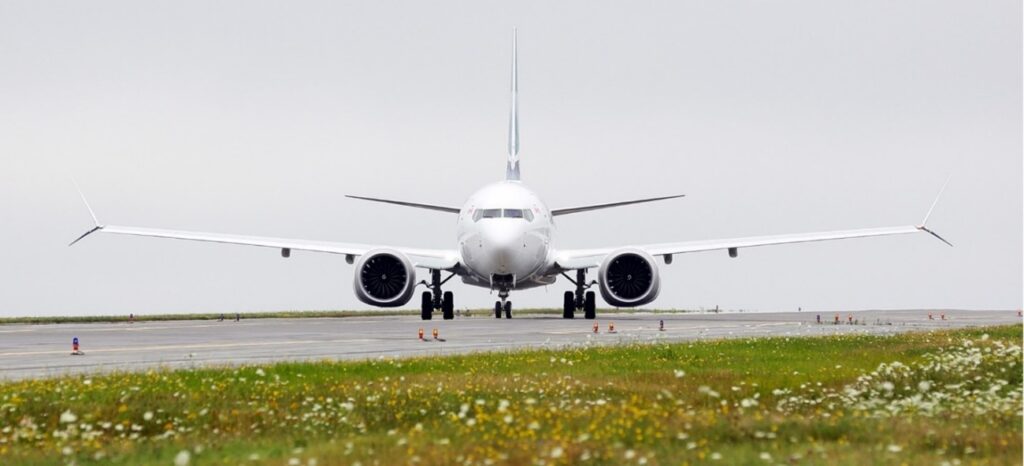Welcome to the June 2022 installment of Atlantic Transport News! We’ve been running a bit behind this month, so apologies for the delay.
Here’s a look at what you’ll find in this edition:
- Newfoundland Cabinet Minister takes a fresh look at ferry rates
- New Brunswick MLA’s saga proves you almost can’t get there from here
- VIA’s Annual Public Meeting – ask your questions now!
- Yves Bourgeois is 2021 John Pearce award recipient
- TAA chooses a new president
- Regional news round-up
NL CABINET MINISTER TAKES A FRESH LOOK AT FERRY RATES
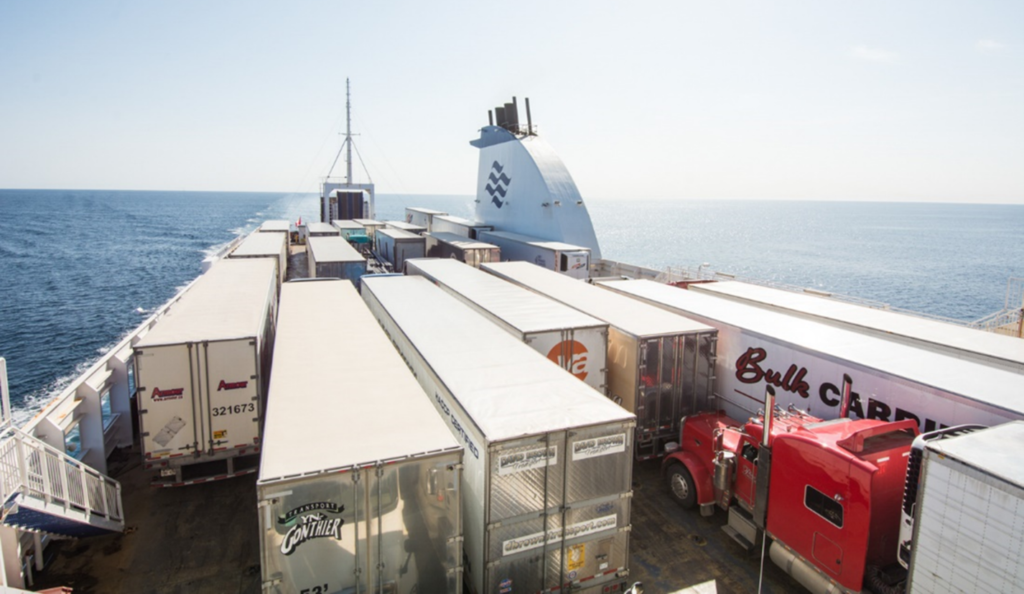
A veteran Newfoundland politician believes the basis for a new deal that would substantially reduce ferry rates between the island and mainland Canada may be “hiding in plain sight.” Speaking at Transport Action Atlantic’s annual general meeting on May 28, Gerry Byrne, Minister of Immigration, Population Growth and Skills in Premier Andrew Furey’s Cabinet, shed some new light on a little-known clause in the Terms of Union. He believes that particular provision, combined with more recent developments, could potentially go a long way toward levelling the province’s troubled transportation playing field.
TAA is among those who have long argued that the latter-day fathers of confederation who negotiated Newfoundland’s entry as Canada’s tenth province in 1949 had intended that transportation of people and goods across the 100-nautical mile Cabot Strait should cost no more than travelling the equivalent distance by land. Simply put, that implied that Canada would absorb the additional costs of the ferry service. But with the transition of freight traffic to trucks and passenger travel to personal automobiles, the cost to users has escalated dramatically – and particularly so over the past two decades. Transport Canada now insists that Marine Atlantic, the federal Crown corporation that delivers the constitutionally-guaranteed ferry service, must recover 65% of its operating costs.
While some have argued that changes in transportation technology have rendered Term 32 anachronistic, Minister Byrne doesn’t agree. He points to Term 32 (3) in the final draft approved on December 11, 1948. It specifically states that “all legislation of the Parliament of Canada providing for special rates on traffic moving within, into, or out of, the Maritime region will, as far as appropriate, be made applicable to the Island of Newfoundland.” And there are no time limits or exceptions specified.
Here’s where things get interesting: In 1993 Parliament approved just such a piece of legislation. It’s called the Northumberland Strait Crossing Act –the agreement under which the Confederation Bridge replaced constitutionally-guaranteed ferry service to Prince Edward Island. It effectively sets the bridge toll at the level of Marine Atlantic’s 1992 ferry rates between Borden and Cape Tormentine, and specifies that they cannot be increased by any more than 75% of the Cost of Living Index.
Minister Byrne believes that Term 32 (3) entitles Newfoundland and Labrador to the same protection against ferry rate increases that Prince Edward Islanders enjoy under the Confederation Bridge legislation. And, he adds, if the rates between North Sydney and Port aux Basques were rolled back to what users were paying in 1992 – adjusted to 75% of the cost-of-living index – the impact would be dramatic, as shown in this graphic from his PowerPoint presentation.

According to a study conducted by the Conference Board of Canada, the reduced ferry rates would result in the creation of 1237 new jobs in Newfoundland and Labrador; a $147-million increase to the provincial GDP; increased exports of $100 million per year; a substantial increase in tourism opportunities; and an increase in consumer spending capacity of $100 million per year.
“The fight is a political one,” says the Corner Brook MHA, adding he also believes it can withstand any legal challenge that might be mounted. He reports that since the AGM he has been in contact with several leaders within the trucking industry community on the matter, and expressed confidence that his initiative is gaining momentum. However, there’s no public indication as yet that any of his cabinet colleagues have embraced the concept. Premier Furey has so far appeared reluctant to raise the unfulfilled 2015 election promise to address the issue of ferry cost recovery with his federal Liberal counterparts.
A copy of Minister Byrne’s presentation to the TAA AGM can be found in the Documents section of our website.
-Ted Bartlett
NB MLA’s SAGA REVEALS YOU ALMOST CAN’T GET THERE FROM HERE
Kevin Arseneau, MLA for North Kent in New Brunswick, attempted to travel from his constituency to the legislature in Fredericton this Spring. The trip, just over two hours by car, took 24 hours and cost $200! It required him to begin his journey on Via Rail, departing Rogersville on the Ocean. An overnight stay was then required in Miramichi and a trip on a local bus to Newcastle next day to connect with Maritime Bus h to Moncton. After a scheduled stopover between coaches, it was on to Fredericton, then a further wait for Fredericton Transit to run him downtown. Kevin clearly demonstrated how difficult it is for anyone without access to a car to travel, even to principal locations in New Brunswick. The journey would have cost $450 by taxi.
If the MLAQ had investigated further, he would have found the adage, “You can’t get there from here!” really does apply when trying to access public transport to many regions in the province.
You can read more about his saga here: https://greencaucusvert.ca/green-mla-highlights-new-brunswicks-inadequate-public-transportation/
And watch the journey here:
-Michael Perry
VIA’S ANNUAL PUBLIC MEETING IS COMING UP – ASK YOUR QUESTIONS NOW!
VIA Rail Canada will be holding their annual public meeting on Tuesday, August 9, 2022. In addition to the usual updates on VIA’s activities and performance over the past year, the APM will provide an opportunity for VIA to answer some questions asked by members of the public.
Questions can be submitted through VIA’s website HERE.
The submission period ends June 30, so be sure to get your questions in ASAP. This would be an excellent opportunity to ask questions about VIA’s plans for services in Atlantic Canada. Consider questions like:
–VIA has acknowledged that the Ocean’s tri-weekly schedule isn’t adequate to serve the travelling public in Atlantic Canada. What plans does VIA have to expand this service to better meet demand?
-Now that the Ocean has lost its Park car and the amenities that come with it, what plan does VIA have to replace these lost amenities, especially to make the service attractive to higher-fare paying passengers?
-The equipment used on the Ocean is in dire need of replacement soon. What are VIA’s plans to replace this aging equipment, to ensure that travellers in Atlantic Canada continue to have access to reliable, accessible, and modern passenger rail service?
The most asked questions will receive answers either during or after the meeting. Though these answers aren’t always comprehensive, it’s worth continuing to ask.
YVES BOURGEOIS IS 2021 JOHN PEARCE AWARD RECIPIENT

A long-time champion of public transportation systems has been chosen to receive Transport Action Atlantic’s annual John Pearce Award for 2021. Yves Bourgeois is the former director of the Urban and Community Studies Institute at UNB Saint John, and is currently dean of studies at the Shippagan campus of the Université de Moncton.
Dr. Bourgeois was recognized for his ongoing promotion of better economic and social outcomes through sustainable transportation access in rural and urban New Brunswick. Most recently he has been the driving force behind a new Acadian Peninsula transportation initiative involving both scheduled and on-demand transportation service between Bathurst and Miramichi, scheduled to begin later in 2022.
Four years ago as chair of the Rural Urban Transportation Advisory Committee Yves led the development of a landmark position paper for New Brunswick’s Economic and Social Inclusion Corporation. The document, entitled From Surfaces to Services: An inclusive and sustainable transportation strategy for the Province of New Brunswick 2017-2037 is an in-depth analysis of transportation needs. While progress has not been as fast as he would have liked, several of the report’s recommendations are being adopted in the Province’s new white paper on municipal reform.
Born in New Brunswick, Yves received his undergraduate degree from U de M in 1993, and went on to earn a masters in philosophy, politics and economics from the University of Oxford, which he attended as a Rhodes scholar. He furthered his studies in the UK with a masters in science and technology at the University of Edinburgh, and completed his PhD in urban planning at the University of California, Los Angeles, in 2006. He was recently appointed to the Expert Panel on Clean Growth with the Canadian Climate Institute.
The John Pearce Award is given annually to recognize an outstanding contribution to the public transportation cause. It was created by TAA in 2017 to commemorate the lifetime achievements in transport advocacy by the late Mr. Pearce, a founding father of the association’s predecessor Transport 2000 Atlantic, a past president, and long-time member of the board.
TRANSPORT ACTION ATLANTIC CHOOSES NEW PRESIDENT

There have been some significant leadership changes at Transport Action Atlantic following the association’s annual general meeting and election of the Board of Directors on May 28. Tim Hayman of Halifax was the board’s unanimous choice for president, replacing Ted Bartlett who had earlier made it known he would be stepping down after more than eight years at the helm.
Originally from eastern Ontario, Tim is an marine and fisheries management professional who came to Nova Scotia as a student 15 years ago, and never looked back. He is a committed public transportation advocate, who doesn’t own a car and confesses to having a particular fondness for train travel. He has been member of the TAA board for the past seven years, and has also served as a director of Transport Action Canada. In addition to his ongoing role as webmaster, he’s also previously served as TAA’s secretary and vice-president.
Supporting Tim in his new challenge will be David Brake of St. John’s, who has been named to the newly-created role of communications director. David has a long history in transportation advocacy in Newfoundland and elsewhere, and currently heads the Essential Transit Association in his adopted city, where he also serves on the Challenge Car Culture Task Force. His background in journalism will serve TAA well going forward.

A former TAA president, Marcus Garnet of Halifax, has offered to serve as vice-president for the coming year, while Michael Perry of Fredericton remains as secretary. Tom Beckett of St. John’s has volunteered for the role of treasurer, replacing Don MacLeod who is retiring from the board after decades of faithful service to the cause. Christine Mills Garnet will continue as membership secretary, while Ted Bartlett plans to continue in a supportive role on several active TAA files as past president.
RAPID FIRE NEWS ROUNDUP
There have been lots of transportation related stories from around the region over the last month. Here are just a few to read through at your leisure.
-Halifax Transit orders electric buses from Nova Bus: https://novabus.com/blog/2022/06/14/nova-bus-announces-its-largest-order-of-electric-buses-in-canada-by-halifax-transit/
-Saint John Transit to pilot electric buses for on-demand service: https://www.cbc.ca/news/canada/new-brunswick/saint-john-electric-buses-1.6483068
-The CAT’s long-awaited return has Yarmouth businesses purring: https://www.cbc.ca/news/canada/nova-scotia/the-cat-brings-early-tourism-season-for-many-yarmouth-businesses-1.6498875
-Miramichi on the move to create walkable, bikeable city: https://www.cbc.ca/news/canada/new-brunswick/miramichi-trails-construction-nb-1.6502410







